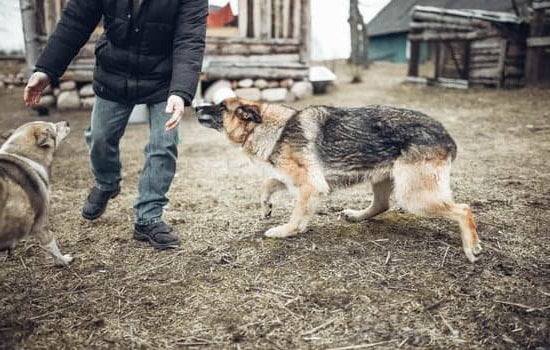Dog behavior training is essential for every pet owner to ensure a well-behaved and happy canine companion. Understanding the complexities of canine behavior and employing effective training techniques can greatly improve the relationship between you and your furry friend.
In this article, we will explore the science behind dog behavior training, common behavioral issues in dogs, positive reinforcement techniques, tools and equipment for training, establishing leadership and boundaries, setting realistic expectations, consistency and patience in training, advanced training methods, the importance of socialization, as well as valuable resources for further reading.
There is a significant amount of research that supports the idea that proper dog behavior training is not just about teaching basic obedience commands, but also about understanding the psychological complexities of your canine companion. By delving into the science behind canine behavior, pet owners can gain valuable insights into the underlying motivations of their pets’ actions.
Additionally, we will discuss some of the most common behavioral issues in dogs such as aggression, separation anxiety, excessive barking, and leash pulling – and provide practical advice on how to address these challenging behaviors using positive reinforcement techniques and other effective methods. By utilizing these insights and strategies with consistency and patience, pet owners can nurture a well-adjusted and socially integrated pet.
Understanding Canine Behavior
Canine Communication and Body Language
One of the key aspects of understanding canine behavior is being able to interpret their communication and body language. Dogs use a combination of vocalizations, facial expressions, and body movements to express their emotions and intentions. By learning to recognize these signals, dog owners can better understand their pet’s needs and feelings, which in turn can facilitate more effective communication and training.
Instinctual Behaviors
In order to effectively train a dog, it is essential to have an understanding of their instinctual behaviors. Dogs are descendants of wolves and still exhibit many wolf-like behaviors such as hunting, protecting territories, and establishing a social hierarchy. These instinctual behaviors can manifest in various ways such as digging, chewing, or barking excessively. Understanding the root cause of these behaviors is crucial for addressing them through training.
Psychology of Learning
The science behind dog behavior training involves an understanding of the psychology of learning. Dogs learn through a process of association and reinforcement. Positive reinforcement – such as treats or praise – strengthens desirable behaviors while negative reinforcement discourages undesirable ones. By utilizing this knowledge, trainers can effectively modify a dog’s behavior by creating positive associations with desired actions.
By delving into the science behind canine behavior training, dog owners can gain valuable insights into how to effectively address behavioral issues in their pets and cultivate a harmonious relationship based on mutual understanding and respect.
Common Behavioral Issues in Dogs and How to Address Them
When it comes to dog behavior training, it’s important to understand the common behavioral issues that may arise in your furry friend. One of the most common problems is aggression, whether towards other dogs or humans. This can be a result of fear, anxiety, or territorial behavior. It’s important to address this issue early on through proper training techniques to ensure a safe and harmonious relationship with your dog and those around you.
Another common behavioral issue is separation anxiety, which can lead to destructive behavior such as chewing furniture or excessive barking when left alone. This can be distressing for both the dog and the owner. Training methods like desensitization and counterconditioning can help alleviate separation anxiety and teach the dog that being alone is not a cause for distress.
Additionally, many dogs struggle with leash pulling, jumping up on people, or excessive barking. These behaviors can be frustrating for owners but are usually a result of lack of proper training and boundaries. With consistent reinforcement and positive training techniques, these issues can be effectively addressed.
In addressing these common behavioral issues in dogs, it’s important for owners to have patience and consistency in their training efforts. Every dog is unique and may require different approaches to overcome their behavioral challenges.
| Common Behavioral Issue | Training Technique |
|---|---|
| Aggression | Positive Reinforcement Training Techniques |
| Separation Anxiety | Desensitization and Counterconditioning |
| Leash Pulling, Jumping Up, Excessive Barking | Consistent Reinforcement Through Positive Training Techniques |
Positive Reinforcement Training Techniques
What Is Positive Reinforcement?
Positive reinforcement is a powerful tool in dog behavior training. It involves rewarding your dog for exhibiting the desired behavior, which increases the likelihood of that behavior being repeated in the future. This technique focuses on using rewards, such as treats, praise, or toys, to encourage good behavior and create a positive association with the training process.
How to Use Positive Reinforcement
When implementing positive reinforcement training techniques, it’s essential to reward your dog immediately after they demonstrate the desired behavior. This instant gratification helps them make the connection between their actions and the reward. Additionally, consistency is key in reinforcing positive behaviors. It’s important to use the same reward each time and deliver it in a timely manner.
The Benefits of Positive Reinforcement Training
Utilizing positive reinforcement can lead to a stronger bond between you and your dog, as well as improved communication and understanding. This method also promotes a more enjoyable training experience for both you and your pet. With positive reinforcement, dogs are more likely to engage willingly in training exercises, leading to faster progress and better results in addressing behavioral issues.
By employing positive reinforcement training techniques, pet owners can effectively address problematic behaviors while fostering a respectful and loving relationship with their furry companions.
Effective Tools and Equipment for Training
When it comes to dog behavior training, having the right tools and equipment can make a significant difference in the effectiveness of your training sessions. One of the most important tools for training is a properly fitted harness or collar. These are essential for maintaining control over your dog during training exercises, especially when working on leash manners or teaching new commands.
Another important piece of equipment for dog behavior training is a sturdy and comfortable leash. A six-foot leash made from nylon or leather is generally recommended, as it provides enough space for freedom of movement while still allowing you to maintain control over your dog. Retractable leashes are not advisable for training purposes, as they do not provide adequate control and can lead to inconsistent reinforcement of commands.
In addition to harnesses, collars, and leashes, treats are also an essential part of positive reinforcement training. High-value treats such as small pieces of cooked chicken or cheese can be used to reward your dog for good behavior and encourage them to learn new commands more quickly. Treat pouches that attach to your belt or clothing are a convenient way to keep treats readily accessible during training sessions.
| Tools/Equipment | Importance |
|---|---|
| Harness or Collar | Essential for control during training |
| Leash | Provides control while allowing freedom of movement |
| Treats | Encourages good behavior and faster learning |
Establishing Leadership and Boundaries With Your Dog
One effective way to establish leadership is through consistent training and clear communication. Use positive reinforcement techniques to reward good behavior and set clear boundaries to discourage unwanted behaviors. Consistency in your commands and expectations will help your dog understand their place within the family unit, reduce anxiety, and prevent behavioral issues from arising.
In addition to training, it is important to provide your dog with daily exercise, mental stimulation, and proper nutrition. A well-exercised and balanced dog is more likely to listen to commands and exhibit good behavior. Establishing routines for feeding, walking, playtime, and rest will also contribute to a sense of stability and security for your dog.
| Aspect | Data |
|---|---|
| Positive reinforcement techniques used | Rewarding good behavior; setting clear boundaries |
| Factors affecting behavior | Daily exercise, mental stimulation, proper nutrition |
| Routines established | Feeding, walking, playtime, rest |
Setting Realistic Expectations for Training Results
Understanding the Process
When it comes to dog behavior training, it’s important to understand that it is a process that takes time and patience. Just like humans, dogs need time to learn new behaviors and unlearn unwanted ones. It’s essential to set realistic expectations for the results of training and understand that it may take some time before you see significant changes in your dog’s behavior.
Persistence and Consistency
It’s important to be persistent and consistent with your training efforts. Dogs thrive on routine and consistency, so if you want to see positive results, you need to make sure that you are consistently using the same methods and techniques. Remember that every dog is different, so while some may respond quickly to training, others may take longer. Being patient and consistent in your approach will ultimately lead to better results.
Seeking Professional Help
In some cases, despite your best efforts, you may find that certain behavioral issues in your dog are particularly challenging to address. In such instances, seeking help from a professional dog behavior trainer can be beneficial. A professional trainer can provide specialized expertise and guidance tailored to your dog’s specific needs, helping you set realistic expectations for the training results while also providing support and assistance throughout the process.
By setting realistic expectations for the results of dog behavior training, being persistent and consistent in your efforts, and seeking professional help when needed, you can ensure that both you and your furry friend have a successful training experience. Remember that every step forward is progress towards improved behavior in your beloved pet.
Tips for Consistency and Patience in Training
Consistency and patience are key elements in successful dog behavior training. Without these, it can be challenging to achieve lasting results. Here are some essential tips for maintaining consistency and patience during the training process:
- Set a regular training schedule: Consistency is crucial when teaching new behaviors or addressing unwanted ones. Set aside dedicated time each day for training sessions with your dog. This will help them understand what is expected of them and reinforce learning.
- Use clear and consistent commands: When giving commands to your dog, use the same words and hand signals every time. Inconsistency can lead to confusion and slow down the training progress.
- Reward good behavior consistently: Positive reinforcement is an effective way to encourage desired behaviors in dogs. Whether it’s praise, treats, or toys, make sure to reward your dog every time they exhibit the behavior you are trying to reinforce.
Patience is also crucial when it comes to dog behavior training. Dogs, like humans, need time to learn and adapt to new behaviors. Here are some tips for maintaining patience during the training process:
- Recognize that every dog learns at their own pace: Some dogs may pick up on new commands quickly, while others may require more time and repetition. Understanding and accepting this variability can help you remain patient throughout the training process.
- Avoid getting frustrated: It’s normal for both you and your dog to experience setbacks during training. Instead of getting frustrated, take a step back, reassess the situation, and try approaching the problem from a different angle.
- Stay calm and positive: Dogs can pick up on their owner’s emotions. By staying calm and positive during training sessions, you can create a conducive learning environment for your pet.
By following these tips for consistency and patience in dog behavior training, you can create a positive and effective learning experience for your furry companion. Consistency and patience are fundamental elements in building a strong bond with your dog while effectively shaping their behavior.
Advanced Training Methods for Challenging Behaviors
When traditional positive reinforcement training techniques are not yielding the desired results, it may be time to explore advanced training methods for challenging behaviors in dogs. These methods can be particularly useful for addressing issues such as aggression, separation anxiety, and excessive barking. Here are some advanced dog behavior training techniques to consider:
- Counter-conditioning: This method involves changing your dog’s response to a certain stimulus by pairing it with a positive experience. For example, if your dog exhibits fear-based aggression towards strangers, you can use counter-conditioning to create a positive association by pairing the presence of strangers with rewards such as treats or toys.
- Desensitization: Desensitization involves exposing your dog to the source of their fear or anxiety in a controlled and gradual manner. By slowly increasing their exposure to the trigger while keeping them below their fear threshold, you can help them become less reactive over time.
- Behavior modification: This approach focuses on changing the underlying emotional state or motivation behind the problematic behavior. It often involves working with a professional trainer or behaviorist who can develop a customized behavior modification plan tailored to your dog’s specific needs.
These advanced methods require patience, consistency, and careful observation of your dog’s body language and reactions. It is important to seek guidance from a qualified professional when implementing these techniques, especially when dealing with complex behavioral issues that may require specialized expertise.
In addition to these advanced training methods, it is crucial to prioritize the well-being of your dog throughout the training process. Always ensure that training is conducted in a safe and non-threatening environment, and be mindful of any signs of stress or discomfort displayed by your dog during training sessions. With dedication and perseverance, even challenging behavioral issues can be effectively addressed through the use of advanced training techniques along with patience and understanding.
The Importance of Socialization in Behavior Training
Socializing your dog is an essential aspect of behavior training. It helps your furry friend become well-adjusted, confident, and comfortable in various environments and around different people and animals. Proper socialization can prevent a range of behavioral issues, such as fearfulness, aggression, and anxiety.
To adequately socialize your dog, consider the following tips:
- Expose your dog to different environments, including parks, neighborhoods, and pet-friendly stores.
- Introduce your dog to various people of different ages, genders, and ethnicities to help them feel comfortable around diverse individuals.
- Arrange playdates with other dogs to help your pet learn appropriate social skills and boundaries.
Positive experiences during socialization are key for shaping a well-behaved and friendly dog. By gradually exposing them to new experiences in a positive way, you can help them develop into a well-adjusted companion.
Remember that socialization is an ongoing process. Continue to expose your dog to new experiences regularly to ensure they remain comfortable and confident in all situations. With patience and consistency in socialization efforts, you can raise a happy and well-mannered canine companion.
Resources and Further Reading on Dog Behavior Training
In conclusion, dog behavior training is an essential aspect of owning a dog, as it not only helps in ensuring a well-behaved and obedient pet but also strengthens the bond between the owner and their furry friend. Understanding canine behavior and employing positive reinforcement techniques are crucial in addressing common behavioral issues in dogs. It is important for dog owners to establish leadership and boundaries while setting realistic expectations for training results.
Consistency, patience, and the use of effective tools and equipment are key in successful dog behavior training. Advanced training methods may be required for challenging behaviors, and socialization plays a crucial role in shaping a well-rounded and sociable pet. Dog behavior training can be complex at times, but with dedication, patience, and knowledge about canine behavior, owners can effectively address behavioral issues.
For those looking to delve deeper into the world of dog behavior training, there are numerous resources and further reading materials available. Whether it’s books, online courses, or consultation with professional trainers, there are plenty of avenues to explore for enhancing one’s knowledge and skills in this area. By investing time and effort into understanding dog behavior training, owners can navigate through various behavioral challenges while creating a harmonious and fulfilling relationship with their beloved pets.
Frequently Asked Questions
How Do You Train a Dog With Behavior Problems?
Training a dog with behavior problems requires patience, consistency, and positive reinforcement. Identifying the root cause of the behavior is essential in order to address it effectively and ensure that the training methods are tailored to the specific needs of the dog.
How Do You Correct Unwanted Behaviors in a Dog?
Correcting unwanted behaviors in a dog involves using positive reinforcement to encourage desired behaviors, rather than punishment for undesirable actions. This can include redirecting their attention, providing alternative behaviors to replace the unwanted one, and ensuring consistent training and boundaries.
What Are the 5 Golden Rules of Dog Training?
The 5 Golden Rules of Dog Training are: be patient and consistent in your training methods, use positive reinforcement to encourage good behavior, set clear boundaries and expectations for your dog, understand your dog’s needs and behaviors, and seek professional help if needed to address specific issues or challenges in training.

Welcome to the blog! I am a professional dog trainer and have been working with dogs for many years. In this blog, I will be discussing various topics related to dog training, including tips, tricks, and advice. I hope you find this information helpful and informative. Thanks for reading!





